By: Kristen McCauley,
Senior Manager of Education & Interpretation
In honor of Bat Week, and Halloween right around the corner, we’ve… well, we’ve gone a little batty! You might say, we’ve got bats-in-the-belfry! A turn-of-phrase that dates to the early 20th century. In fact, one early example of the phrase appearing in print is in Elbert Hubbard’s 1899 Little Journeys to the Homes of Eminent Painters, in a chapter about the French artist Gustave Doré. Hubbard quotes painter James Whistler, who is dismissive of Doré’s talents. Though Hubbard later claims it was meant as a joke.
Doré—Gustave Doré—an artist? Why, the name sounds familiar! Oh, yes, an illustrator. Ah, now I understand ; but there is a difference between an artist and an illustrator, you know, my boy. Doré—yes, I knew him—he had bats in his belfry!
Elbert Hubbard, Little Journeys to the Homes of Eminent Painters,” G.P. Putnum’s Sons, New York, January 1899.
Way harsh, Whistler.
But, we’re not here to go to bat for Gustave Doré. Although, I wouldn’t bat an eye! (I’m a fan of his spooky illustrations, personally.)
We are here to talk BATS! And bats as a motif in the Arts & Crafts. And to share a fun craft you can make at home with your Craftsman Kids! (Jump to instructions.)
“Bats rarely appeared in Western decorative arts until the turn of the century, largely due to the fact that as nocturnal animals they were associated with night and death. They were deemed appropriate for funerary monuments but not for objects to be used in the home. Yet all this changed after 1900 and was due largely to the influence of Japanese art where bats are an emblem of happiness. They frequently appear in Japanese paintings and prints, as well as on lacquer and metalware, and in textile designs. Bats entered the Western repertoire as part of the Japoniste tide, and appeared with increasing regularity in all media.”
Martin Eidelberg, ILLUMINATING THE NIGHT, The Lamps of Louis Comfort Tiffany, New York, 2005.
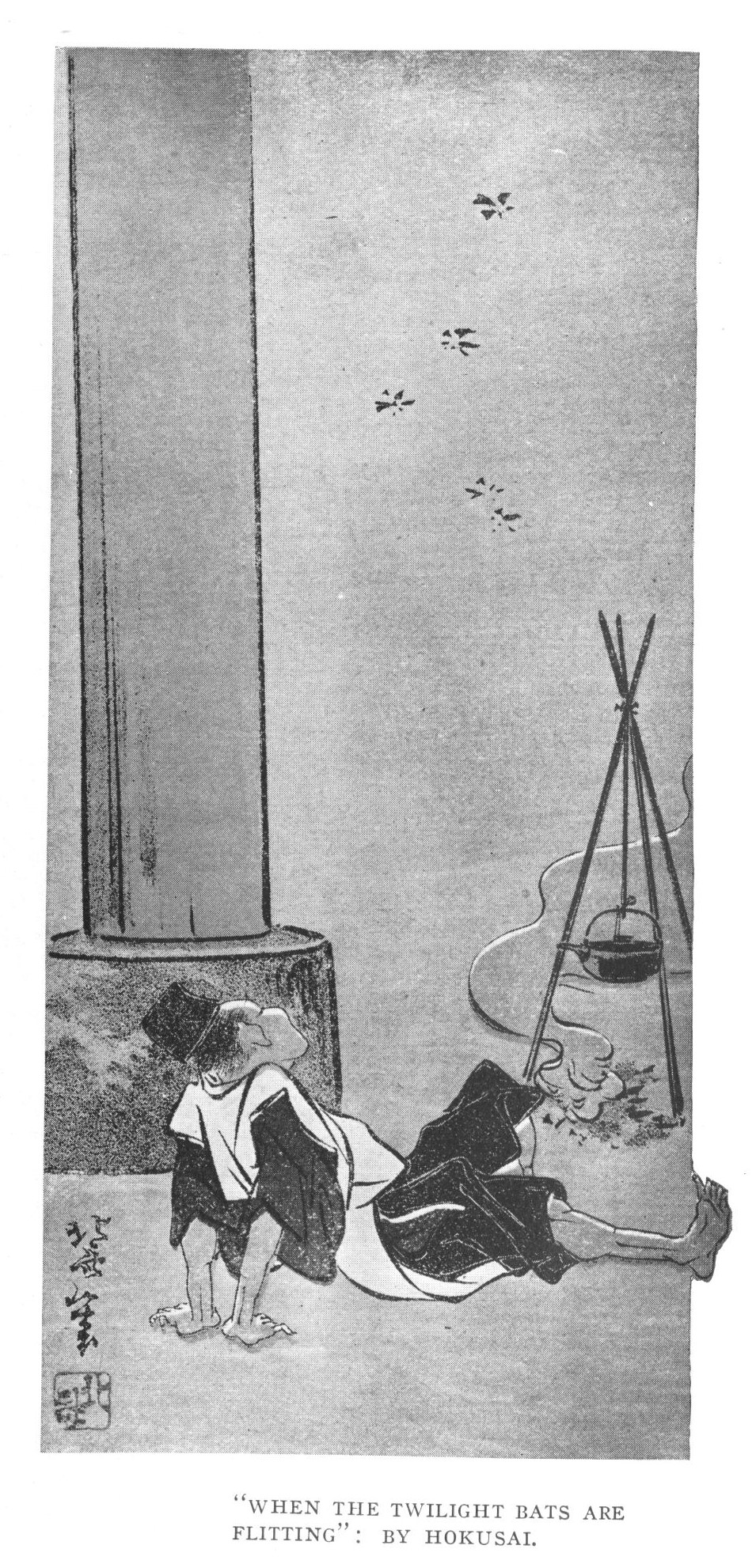
“When the Twilight Bats are Flitting,” By Hokusai
Illustration from “How Beauty and Labor are Interwoven in the Daily Life of Japan,” The Craftsman Vol. XVII, Number 5 February 1910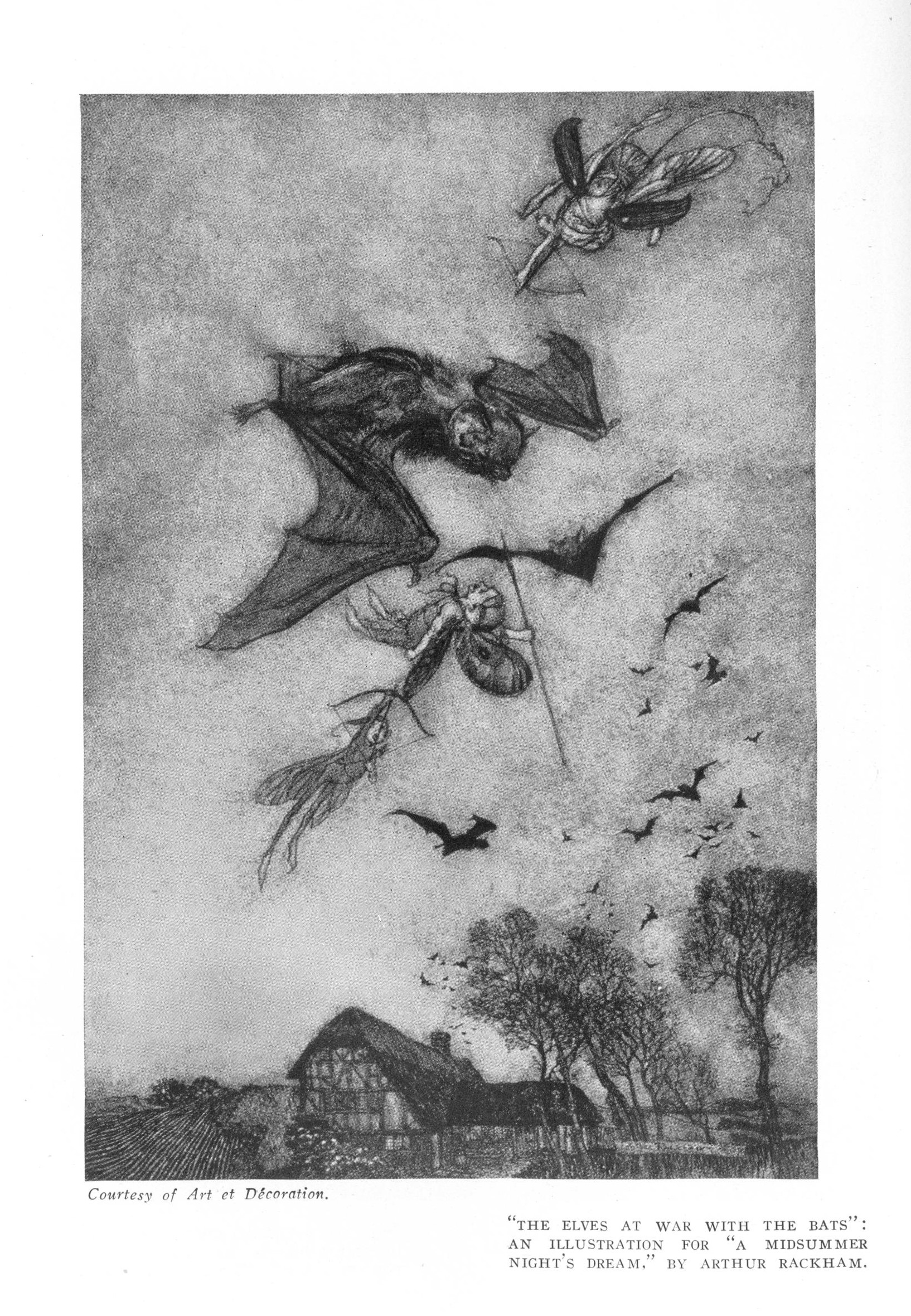
“Arthur Rackham, the Illustrator of Folk-Lore and Fairy Tales,” The Craftsman Vol. XXIII, Number 2 November 1912. pg 144.
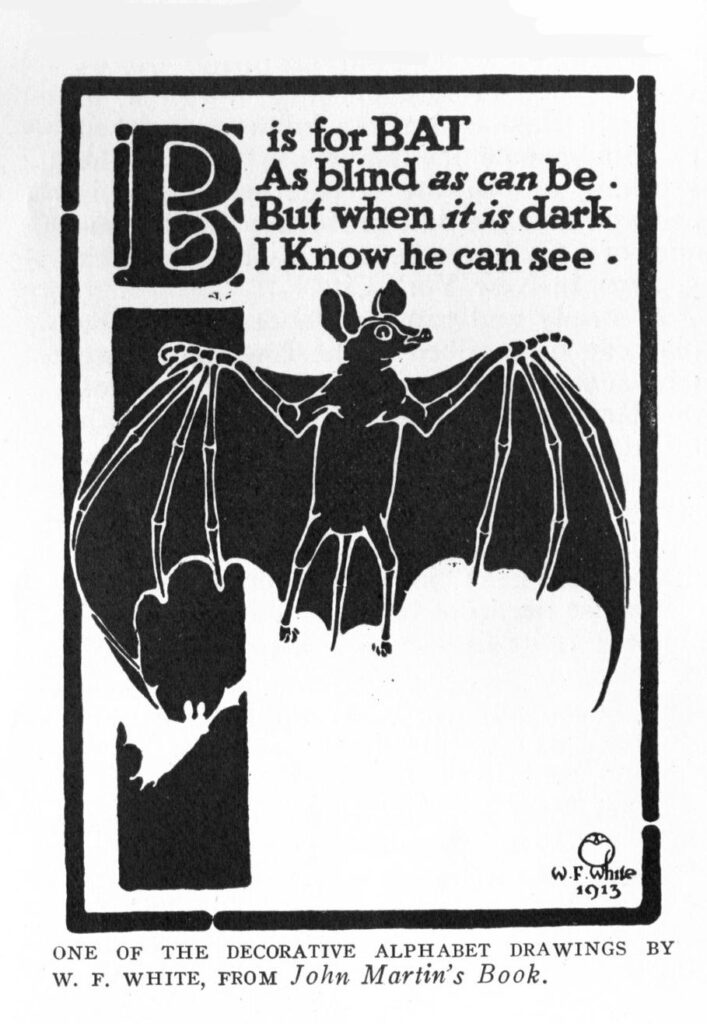
The Craftsman ran a monthly column of book reviews, and in February 1914 we get a review of John Martin’s Book, a monthly magazine of “stories, verses, wonder tales, fables and legends, all of them rich in illustrations and put together in a form that the children seem to love,” complete with illustrations. One example shown in the magazine is from a series of alphabet drawings by W. Fletcher White.
“B is for BAT. As blind as can be. But when it is dark, I know he can see.”
“The interest of John Martin’s Book is not confined to juvenile readers. Pictures, verse and prose have a certain artistic and humorous quality that wins attention from older eyes.“
Image: “John Martin’s Book: An Interesting Development in the World of Children’s Magazines,” The Craftsman, Vol. XXV, Number 5 February 1914.
Bats in art have been associated with night and death, as well as with happiness and luck; with terror and mystery, and the magic of night time. They have long been misunderstood creatures, shrouded in mystery because of their nocturnal nature.
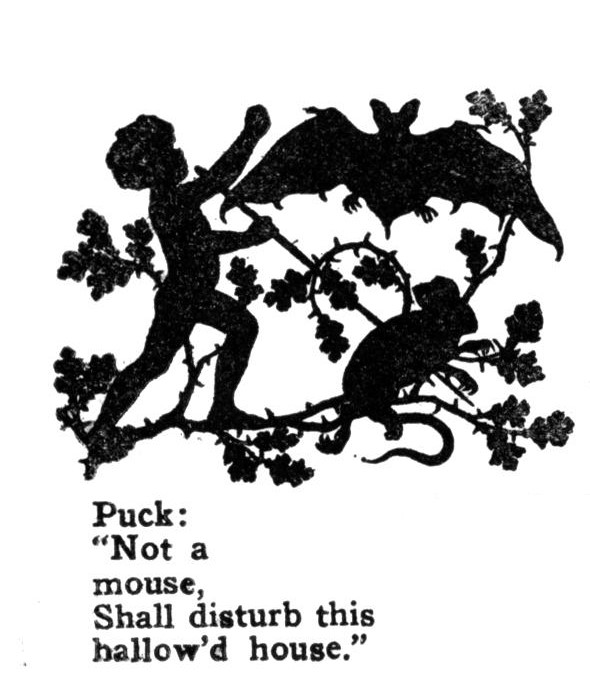
If you are ever at Craftsman Farms at dusk (although, the park closes at dusk, so what are you doing? Please don’t loiter!) and look up, you’re likely to see bats flitting about the night sky. New Jersey is home to several species of bats and they are protected by law. Bats eat pesky insects and are important pollinators and seed dispersers, but many species are in danger of extinction. A local organization, the Parsippany Green Team, has recently launched an initiative called The Parsippany Bat Protection Project. Its goals are to educate residents and business owners about the importance of bats in the ecosystem, to provide local bats with suitable habitats and to humanely reduce conflicts between bats and people. What a great partnership! If you ever have bats in your belfry (or your home or business) check with local authorities about having them humanely removed, and consider installing a bat house on the outside of your home to provide an alternate habitat.
Image: “Silhouette Illustrations for “Midsummer Night’s Dream”: Drawn by P. Konewka” The Craftsman, Vol. XXXI, Number 3, December 1916. pg 270.
There’s no mystery here. This craft is pure fun! We’re making a Bat Jumping Jack Puppet using simple materials we already had on hand. We hope you’ll go batty and make your own spooky flying bat!
Craftsman Kids: Bat Jumping Jack
MATERIALS:
String
Scissors
Card Stock
Needle – Plastic Large-Eye Needles like these.
Small brass fasteners
Bat Template
Hole punch – we used two sizes, one small, one standard
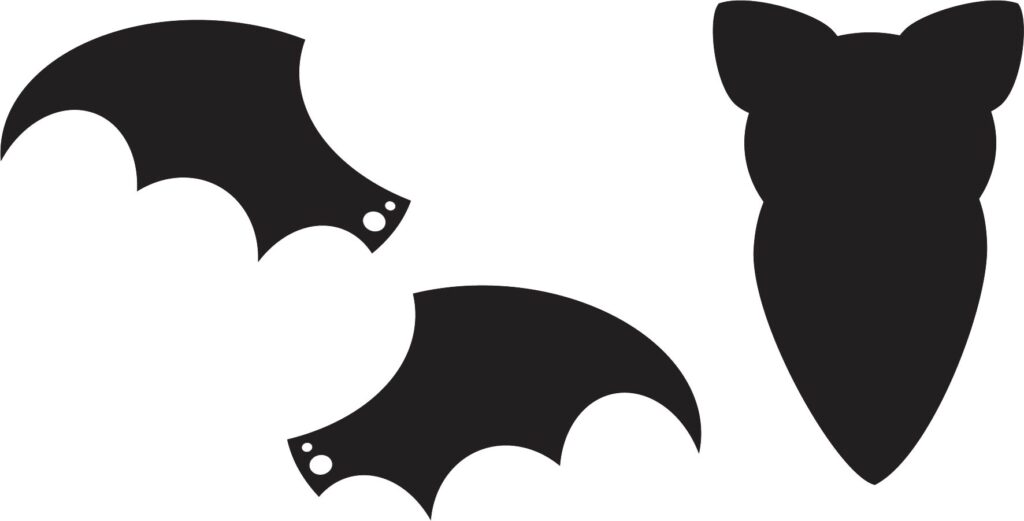
DIRECTIONS
- Print our bat template onto lightweight card stock and cut out the body and wings.
- Using a hole punch, punch holes as shown. Two for each wing – one large for the brass fasteners, and a smaller one for the string. And one small hole at the top center.
- Loosely connect the wings to the body with brass fasteners through the larger hole in the wings.
- Thread the needle and knot one end of the string.
- Push needle through small hole of one wing and then across the back and through the second wing. Make sure the wings are down and the string is straight across the back of your bat’s body – not too tight or too loose. Knot the other end.
- Tie another piece of string to the center of the first, hanging down the middle of your bat.
- Loop a piece of string through the top hole – this is what your bat will hang from, so make sure it’s long enough to hold – about 10- 12 inches.